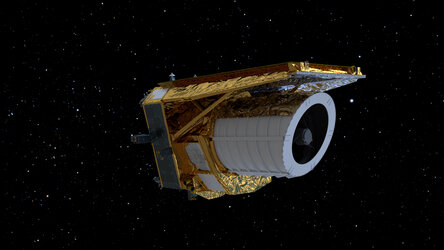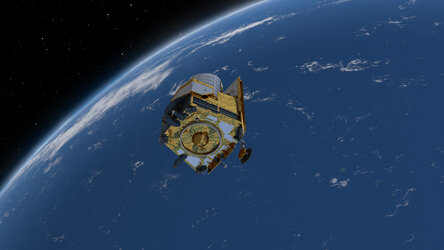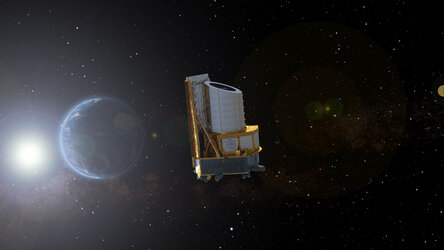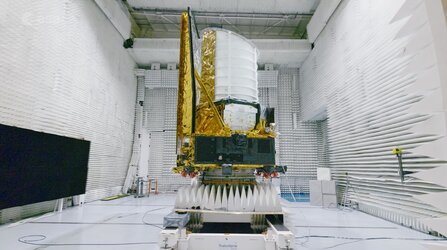

Euclid’s sunny side
An artist impression of ESA’s Euclid mission in space. The spacecraft carries a 1.2-metre telescope that collect the light from sources in the sky such as far-away galaxies. The light is directed onto Euclid’s two scientific instruments: the visible camera VIS that will provide very sharp images, and the near-infrared spectrometer and photometer NISP which will provide both images and spectroscopic data, over the largest infrared field of view from space.
Several satellite subsystems are needed to ensure the mission’s success. On this image we can clearly see the sunshield, which always faces the Sun and protects the telescope from the light and heat of the Sun. Euclid’s backside holds the solar arrays that power the satellite. The high-gain antenna sticks out from underneath the solar panels, pointing towards Earth. The bottom of the satellite also holds several thrusters, used to keep the satellite on its correct orbit.
ESA's Euclid mission is designed to explore the composition and evolution of the dark Universe. The space telescope will create the largest, most accurate 3D map of the Universe across space and time by observing billions of galaxies out to 10 billion light-years, across more than a third of the sky. Euclid will explore how the Universe has expanded and how and how large-scale structure is distributed across space and time, revealing more about the role of gravity and the nature of dark energy and dark matter.





